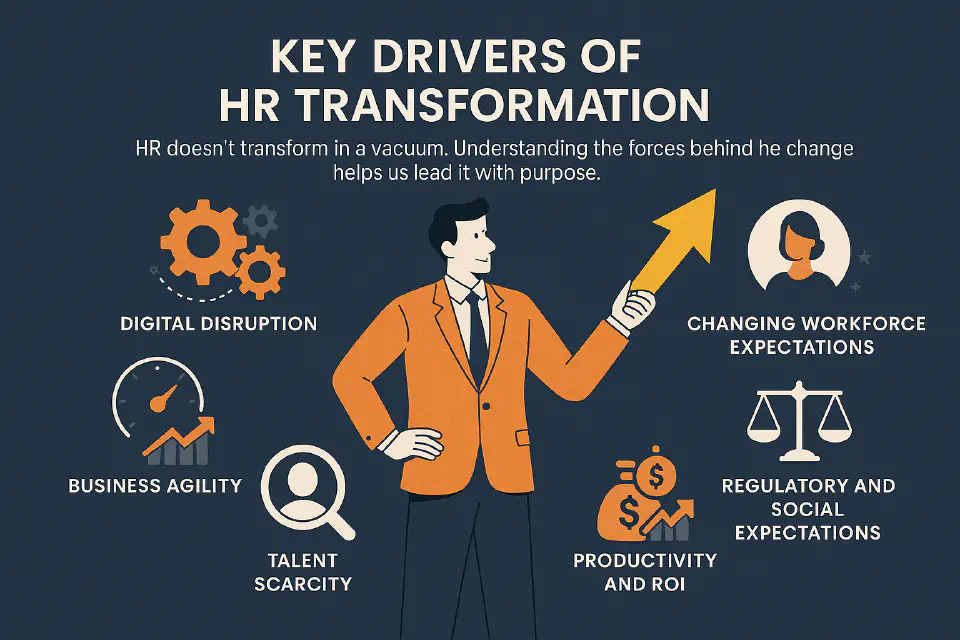
Key Drivers of HR Transformation
HR doesn’t transform in a vacuum. Understanding the forces behind the change helps us lead it with purpose.
Why are so many HR departments undergoing transformation? The answer lies not in HR itself, but in the external and internal forces reshaping the business world. To lead effective HR transformation, we must first understand what’s driving it.
1. Digital Disruption and Technological Advancement
Technologies such as AI, machine learning, and robotic process automation (RPA) are changing how we work, what we expect from work, and how organizations operate. HR must adapt:
- Automating repetitive processes like payroll and scheduling
- Using AI for talent acquisition, engagement, and learning
- Leveraging data analytics for workforce decisions
2. Changing Workforce Expectations
Modern employees expect more autonomy, flexibility, and purpose in their work. Traditional one-size-fits-all HR practices no longer suffice.
- Remote and hybrid work models are the new normal
- Employees expect personalized experiences and career paths
- Well-being, inclusion, and values alignment matter more than ever
3. Business Agility and Speed
Markets change fast—and companies need to adapt or die. HR must become a catalyst for agility:
- Enabling rapid workforce redeployment
- Building flexible org structures and fluid teams
- Supporting agile decision-making with real-time people data
4. Pressure on Productivity and ROI
Organizations are under constant pressure to improve productivity and reduce costs. HR is expected to deliver measurable value:
- Prove the ROI of L&D, recruitment, and engagement initiatives
- Align people strategy with performance metrics
- Eliminate inefficiencies in HR operations
5. Talent Scarcity and Skill Gaps
Finding the right talent is harder than ever. At the same time, the skills needed for success are constantly evolving:
- Reskilling and upskilling are core business priorities
- Strategic workforce planning becomes essential
- HR must help the business compete for scarce capabilities
6. Regulatory and Social Expectations
From GDPR to pay transparency laws and DEI accountability, HR must navigate increased compliance complexity while also meeting rising social expectations.
- Ethical data use and privacy in people analytics
- Transparent and fair HR practices
- Corporate social responsibility and ESG reporting
7. Evolving Role of HR
Last but not least, HR itself is changing. The profession is shifting from administrative and reactive to strategic and proactive.
- HR is expected to be a business enabler, not just a support function
- CHROs are now key members of executive teams
- Data, agility, and influence matter more than process and control
Final Thought
Understanding the why behind HR transformation is the foundation for designing the how. These forces are not temporary—they’re structural. HR leaders who embrace and anticipate them will be the ones who shape the future of work, not just react to it.